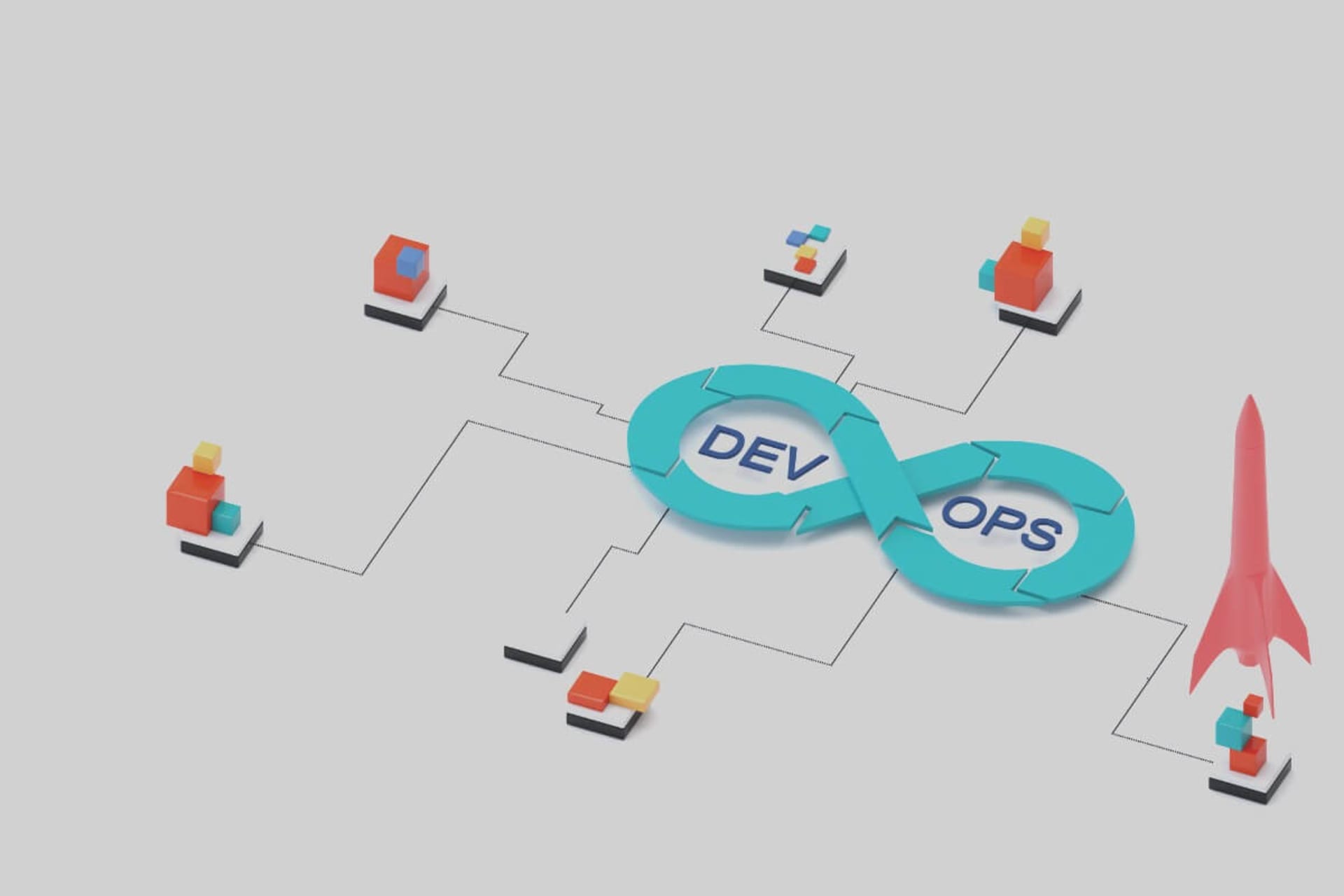Even though DevOps has only been around as a codified discipline for just over a decade, it has been so widely adopted it is now the default way most IT shops work with their developers.
DevOps is the blending of software development and IT operations into a cohesive unit that shares the responsibility for running and maintaining an organization’s software portfolio.
In the past, software developers built applications and IT managed them. Because developers and IT usually had conflicting goals, responsibilities, and marching orders, running and maintaining the software they created was a significant, time-consuming challenge for IT operations staff. With the arrival of DevOps, however, the 2 groups now work together to ensure production systems run smoothly.
Even so, the reasons DevOps has been adopted so quickly are mainly business focused. Software updates that used to take weeks or months to move into production can now be done in hours. This improves business agility and rapid business model transformation to meet ever-changing customer demands and requirements. And, by keeping downtime to a minimum, DevOps has been shown to increase business resiliency, as well.
DevOps Future: What’s In Store
According to analysts, the business-outcomes focus of DevOps will continue in the foreseeable future as it evolves from a discipline centered on IT operations to one focused on business outcomes. To achieve this product-focused orientation, DevOps teams will increasingly be defined by purpose rather than function. These include:
- Business and end-user-aligned features teams
- Coaching and internal consulting done by enablement teams
- Platform teams to support feature team developers
- Specialty teams (aka, infrastructure or platforms teams) focused on mainframes and other specialty hardware
How these teams are led will also change. Many organizations are experimenting today with less-hierarchical, collaborative leadership approaches that draw from all the different specialty areas that make up a particular team.
#1 Practice Vs Process
Today, DevOps is still an internally process-focused discipline. Its KPIs center on team outputs, activities, and deliverables. Going forward, KPIs will focus more on measurable customer and stakeholder outcomes, aka, business results. DevOps practices will align value streams that are focused on speed and business agility.
In order for DevOps to scale, automation of mundane repeatable processes will continue to grow. This includes greater automation around governance, compliance, security, and standardized IT operations.
Tasks will be broken down into those that automation is well suited to execute and those that require a higher degree of understating that only a human can realistically apply. Automation also will free up highly-skilled and hard-to-find developer and IT talent to focus on more value-added activities such as exception management, solution design, and creative problem solving.
#2 Cyber Security Takes Center Stage
Cyber security is a board room-level discussion today. No matter how much security is in place, no organization is safe from cybercrime. As Agile development practices continue to move more code into production faster than ever, ensuring it is secure at go-live has never been more important.
DevOps will continue its evolution into DevSecOps, where security best practices are baked into the software release cycle. This will be achieved by inviting security teams to early application planning sessions and ensuring basic security tools such as multi-factor authentication are in place. This early-stage collaboration will increase overall security and organizational agility.
Code-based change management will take over from swivel-chair integration, where someone is manually entering change tickets into a service desk solution such as ServiceNow. In the future, DevOps pipelines will continuously integrate with service desk management platforms. This will cut down errors and accelerate release cycles by ensuring all change requests are complete before go-live.
#3 Platforms & Automation
As DevOps continues along this evolutionary path, automation will play an ever-larger role. DevOps teams will migrate away from point solutions by adopting integrated SDLC pipelines that run on dedicated platforms. These platforms may include MLOps capabilities, unified CI/CD/CDRA, low-code/no-code platforms, and will extend to the network edge.
Automation requires detailed, real-time data to effectively improve risk management. This is why machine learning algorithms will play a larger role in analyzing risk in future development pipelines.
#4 DevSecOps Becomes Huge
Security will remain at the top of the priority list for businesses of all sizes, so it’s no surprise that DevSecOps will become more popular than ever during 2021. As development teams embrace more and more cloud-based technologies, the development lifecycle will need a cloud-native security approach that can only come from DevSecOps.
By integrating security and testing into development pipelines now governed by DevOps, teams will be able to integrate tighter protections into their work, especially with higher automation levels. By adopting a DevSecOps-centric methodology, developers will ensure the proper security level throughout the entire development lifecycle all while increasing the regulatory compliance with applicable security standards.
#5 Toolchains Grow More Complex
DevOps teams use numerous tools to support their daily activities. The main goal of using that group of tools (often referred to as “toolchains”) is to help engineers collaborate and measure their work. Given DevOps’ popularity, the number of tools for that specific purpose is growing by the minute. Yet, it’s not just the amount of toolchains that will increase during 2021 but also their complexity.
That’s a natural response to the implementation of security in DevOps practices and the widespread adoption of containers. Thus, instead of relying on numerous different tools to support the DevOps tasks, teams will start flocking towards broader and more complex solutions that can tackle different tasks across the development and delivery cycle. It’s likely that developers will seek out one sophisticated toolchain to support different platforms, streamlining the operations, and increasing the productivity in the process.
#6 Teams Will Embrace APM Software
One of the key aspects of the DevOps lifecycle is getting quick feedback, especially during deployments. That’s why the emergence of Application Performance Monitoring (APM) applications will solidify during 2021. That’s because it can help with monitoring deployments while providing valuable insights into performance. Right now, APM tools can help in checking user interactions, discovering and tracing applications, and providing analytics through AI-based algorithms.
However, the year ahead will see how these tools will grow even stronger, which will be the main reason fueling its widespread adoption. New APM platforms will extend their capabilities to monitor integrated infrastructures with built-in analysis, perfect to check in on networks, databases, containers, microservices, and cloud services. What’s more – its AI integration will turn APMs into the perfect ally to detect and predict anomalies while also providing more insights into customer journeys.
#7 Infrastructure Automation Tools Will Achieve Critical Mass
DevOps seeks to ensure continuous delivery and integration, an objective that can be more easily achieved through automation tools. To be more specific, infrastructure automation (IA) applications are perfect to automate delivery, configuration, and overall management of the IT infrastructure. With them, your team can orchestrate multi and hybrid clouds with efficient resource provisioning and increased reliability.
Those benefits will be responsible for the wider adoption of IA tools in different pipelines across the industry, especially given that most teams will be looking for more agility for their CI/CD. Naturally, that adoption of IA tools will mean that teams will cast custom setups aside to favor IA tools of enterprise level. While doing so will seemingly mean a loss on personalization and control, the reality shows that IA tools can increase the speed of deployments, ensure reliability across different infrastructures, and reduce costs by the way of automation.
#8 Releases Will Increase Their Speed & Quality
Finally, 2021 will be the year in which DevOps teams will increase the speed and quality of their releases. The main reason will be the popularization of Application Release Orchestration (ARO) tools, applications that combine pipeline management with release orchestration. That way, teams can deliver new applications more quickly, since teams can scale release activities across different pipelines and tools.
Using ARO tools will increase the team’s productivity, as there will be fewer manual tasks to deal with. Also, they will provide higher visibility on bottlenecks and wait states, which will make it easier to handle them before they cause big problems. In the rise, the popularity of ARO will rise because of the increasing need to respond to quick changes in market demands, a direct consequence of the disruptions in the business landscape caused by the pandemic.
#9 DevOps Will Become More People Orientated
At its core, DevOps is about people and improving how they work together. Organizations that successfully deploy DevOps at scale will lean into and adopt this mindset, not just DevOps best practices around CI/CD, automation, and software support and maintenance.
The cross-cultural nature of established teams will lend itself well to team-based problem-solving and support. Different support tiers will start to collapse into a more horizontal structure where the concept of tier 2 support disappears in favor of more difficult problems escalating directly to the product teams and tier 1 support stretching to accommodate lower-level cases.
Having adopted DevOps over the past years isn’t enough to keep leveraging its benefits. DevOps practices aren’t set in stone, as they are in constant evolution: the 5 trends in this article are the perfect proof of that. That means that you’ll have to keep an eye on the emerging trends and the new tools that are becoming available for DevOps teams and adjust your lifecycle accordingly.
If you enjoyed this, be sure to check out our other DevOps articles.







